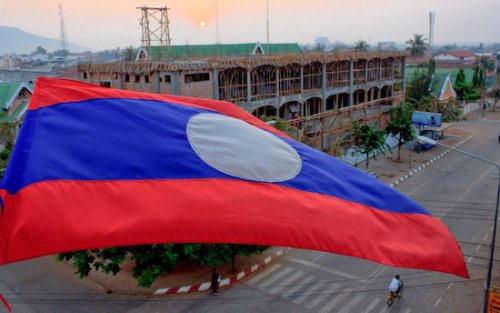Lao Economic Growth Slows: World Bank
Economic growth in Laos will slow down this year as one of the largest mining operations in the country has halted gold production, according to a report from the World Bank.
The bank released its Lao PDR Economic Monitor at Lao Plaza Hotel in Vientiane yesterday, showing that economic growth in Laos is projected to moderate at 7.2 percent in 2014 after experiencing growth of at least eight percent over the past two years.
The report titled Managing Risks for Macroeconomic Stability says one of the main causes of the slower economic growth is that the resource sector is expected to provide a smaller direct contribution to growth.
 |
|
Keiko Miwa ( left ) and World Bank economists at the launching of the Lao PDR Economic Monitor at Lao Plaza Hotel in Vientiane. |
Sepon mine, one of the largest mining operations in Laos, opted to cease gold production at the end of last year, forcing it to lay off 400 workers.
A Lao economist from the National Economic Research Institute agreed with the World Bank’s projection that the Lao economy will see slower growth but said it would not be as low as 7.2 percent.
He said that the state owned economic research institute was preparing to unveil its own Lao economic monitor over the next few weeks.
The World Bank’s report says another cause of the slowdown is that numerous major investment projects are still under construction and are not expected to bring in revenue until further down the track.
Despite lower gold production however, the output of copper production in Laos will continue to increase. Production output in the services, food processing and beverage sectors is expected to continue to grow this year with support from domestic demand.
The report also looks at the 2013/2014 budget plan and finds that it indicates a slightly narrower deficit compared with the previous fiscal year.
However cuts in civil service benefits will be offset by new recruitment as well as a further increase in salaries paid to civil servants for two consecutive years.
It is important to review the pace of the public wage bill increase going forward, the report says.
The report also notes that the government has discussed some revenue administration measures to help address the issue.
In addition to revenue measures, there is a need for prudent medium-term expenditure planning and execution by the government.
The reports also notes that foreign exchange reserves in 2013 fell to their lowest level in a decade in terms of import coverage, with only 1.3 months of goods and service imports.
This trend was fuelled by the widening current account deficit, driven by resource sector investment as well as strong domestic demand and accommodative fiscal and monetary policies.
“We encourage the government to increase efforts to tighten fiscal and monetary policies so as to safeguard the economic achievements of recent years” said World Bank Country Manager Keiko Miwa.
An official from the Bank of the Lao PDR who attended the meeting said that the foreign reserve of Laos was still high, noting that it is still able to secure imports of goods and services for at least five months.
Source: Vientiane Times

